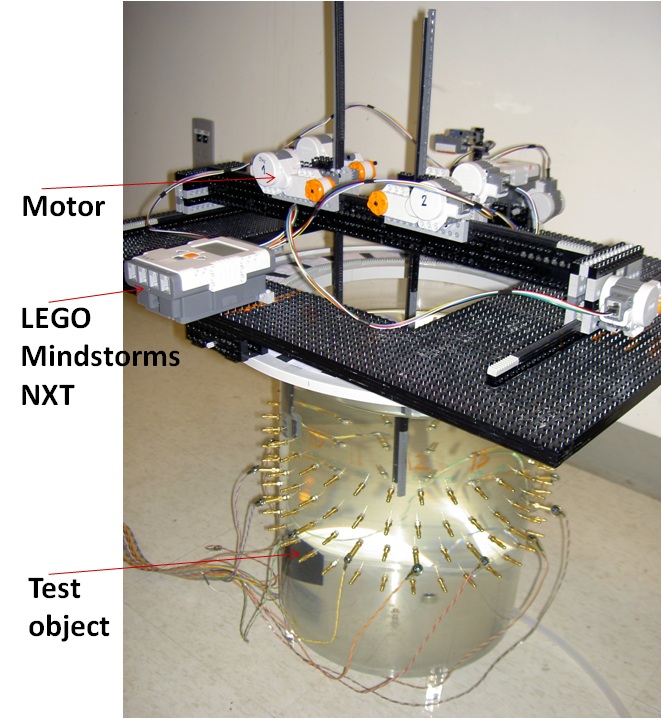We aim to produce a standard test methodology to evaluate and compare the performance of an EIT hardware system and image reconstruction. To be part of our collaborative project, suggestions regarding efficiently evaluate system performance are all welcome. The tutorial includes overview of phantom based EIT performance evaluation, code, data and image analysis.
-
Yasheng Maimaitijiang, Stephan Böhm, Obaydah Jaber, Andy Adler,
"A phantom based system to evaluate EIT performance"
Int. Conf. Electrical Bio-Impedance & Electrical Impedance Tomography Gainville, Fl, USA, 4-8 April 2010
| Files: | Description | |
|---|---|---|
| avar.m | Calculate Allan Variance (code available from here) | |
| data_analysis.m | Analyse data for SNR and Accuracy | |
| drift_analysis.m | Analyse data for drift | |
| image_analysis.m | Analyse data for image reconstruction performance | |
| recip_err.m | Calculate reciprocity error | |
| U2plateau.m | Convert from "U-shape" to "plateau" data ordering | |
| main.m | Main function to call others and plot data | |
| sim_2D_params.m | Example in 2D | |
| sim_Det_3D.m | Example in 3D | |
| code.zip | Zip file (containing all above files) |
- Yasheng Maimaitijiang, Stephan Böhm, Obaydah Jaber, Andy Adler A phantom based system to evaluate EIT performance Int. Conf. Electrical Bio-Impedance & Electrical Impedance Tomography Gainville, Fl, USA, 4-8 April 2010
- Yasheng Maimaitijiang, Stephan Böhm, Obaydah Jaber, Andy Adler A phantom based system to evaluate EIT performance (Poster) Int. Conf. Electrical Bio-Impedance & Electrical Impedance Tomography Gainville, Fl, USA, 4-8 April 2010
All software components are made publicly available and short tutorials are provided regarding evaluation and algorithm. In order to run the code, users are required to install and start the EIDORS. There are two separate systems namely the position controller and the EIT measurement system evaluation. Position controller is placed under part of contrib_data section under eidors. This section is a guide to performance evaluation algorithm.
1.Test requirement:- The test methodology and tests should be reproducible
- Phantom should represent a 3D tank
- Full cables to be used during the evaluation
- Electrical layouts and analysis software should be publicly available
- EIT system users to check EIT system degradation/improvements or compare different systems
- Hardware developers to test hardware improvement
- Software developers to test their new algorithms
- Physical phantom (cubic conductive or non-conductive test targets) with size of (50 ml and 100 ml)
- 3D tank filled with saline water
- Empty tank measurement used for analyzing noise characteristics of an EIT system.
- Single-object measurement: Horizontal movement in central and off plane,
- Two-object measurement: 2 objects moving away each other from the centre of the tank - horizontal movement in central plane
- data analysis for Noise performance test
- SNR
- Accuracy
- Drift
- Errors associated with symmetric measurement electrodes
- image analysis for tests of imaging accuracy
- Amplitude response (AR)
- Position error (PE)
- Resolution (RES)
- Shape deformation (SD)
- Ringing (RNG)
- Tests of detectability and distinguishability
